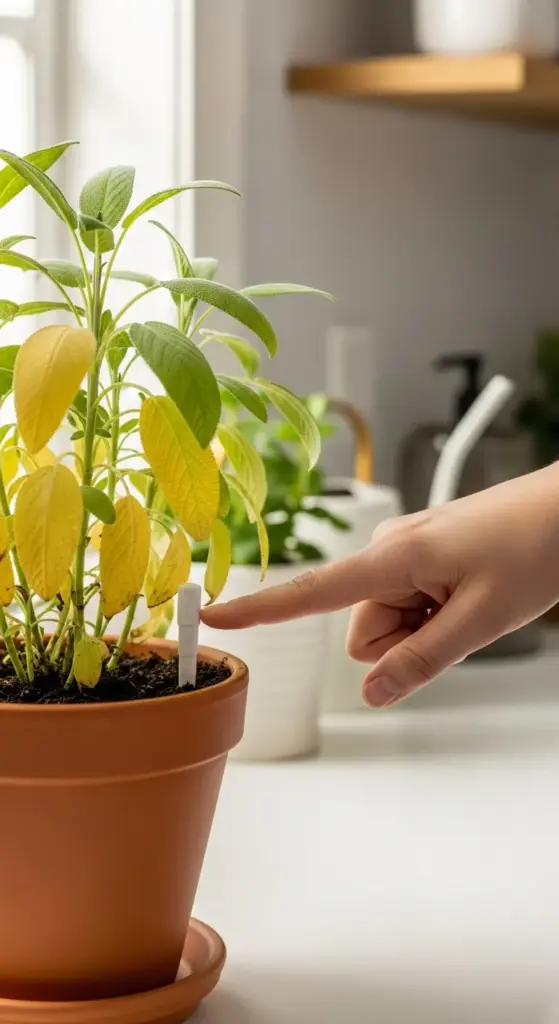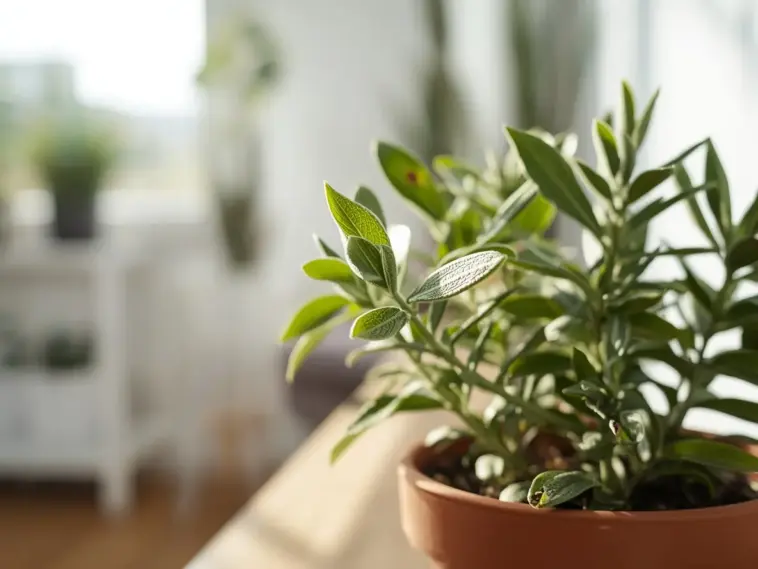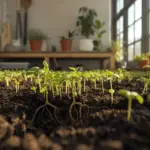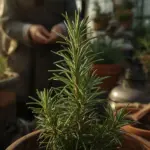Did you know that 73% of indoor herb gardeners lose their sage plants within the first month?
If you’re like most busy women juggling home decor projects, meal prep, and daily life, you might be missing the subtle SOS signals your sage is sending.
That beautiful potted sage you picked up to elevate your kitchen’s aesthetic and enhance your cooking isn’t just another pretty plant—it’s a living investment in your home’s ambiance and your culinary adventures!
But here’s the thing: sage plants are surprisingly dramatic when they’re unhappy, and by week three, what starts as minor stress can become a plant emergency.
Let’s dive into the seven critical warning signs that could save your indoor sage before it’s too late.
Warning Sign #1: Yellowing Lower Leaves Signal Overwatering Drama

Oh boy, let me tell you about the time I nearly killed my first sage plant with what I thought was “love.” I was watering that poor thing every single day because I wanted to be the perfect plant mom.
Yellow leaves started appearing on the bottom branches within two weeks. At first, I thought it was just the plant settling into its new home – boy, was I wrong!
The Difference Between Natural Aging and Overwatering Yellowing
Here’s what I learned the hard way: natural leaf aging happens gradually, usually affecting just one or two older leaves at the bottom. The yellowing is slow and the leaves feel papery when they’re ready to drop.
Overwatering yellowing is completely different. Multiple leaves turn yellow at once, and they feel soft and mushy – almost like they’re melting. This is your sage plant literally drowning.
The yellowing from too much water also spreads upward faster than natural aging. I watched my sage go from two yellow leaves to eight in just three days!
The Life-Saving Finger Test Method
My neighbor taught me this soil moisture test after she saw me frantically googling “dying sage plant” on my phone. Stick your finger about 2 inches deep into the soil – if it’s wet or even damp, don’t water yet.
Sage plants prefer their soil to dry out between waterings. I was shocked when I first did this test and found soggy soil three inches down, even though the surface looked dry.
The finger test should be done every few days, especially during your plant’s first month. I set a phone reminder because I kept forgetting to check.
Ceramic vs. Plastic: The Drainage Game-Changer
This was a revelation that saved my second sage plant! Ceramic pots with drainage holes allow excess water to evaporate through the sides, while plastic containers trap moisture like a greenhouse.
I switched from a cute plastic planter to a terracotta pot, and the difference was incredible. The soil dried out properly between waterings, and those dreaded yellow leaves stopped appearing.
Plastic pots aren’t evil, but they require way more careful watering. If you’re using plastic, water less frequently and make sure there are multiple drainage holes.
Emergency Fixes for Overwatered Sage
When I caught my overwatering mistake, I immediately stopped watering and moved the plant to a brighter spot. Increased light helps the plant use up excess moisture faster.
Remove any yellow or mushy leaves right away – they won’t recover and they’re just draining energy from healthy parts. I use clean scissors and cut at the stem.
The nuclear option is repotting with fresh, dry potting mix. I’ve done this twice when the soil was completely waterlogged, and both times it saved the plant.
Busy Schedule Prevention Tips
Let’s be real – life gets crazy and plant care gets forgotten. I started using a moisture meter (about $10 on Amazon) because the finger test wasn’t happening consistently.
Automated watering systems can be tricky with herbs. If you use them, set them for longer intervals – maybe every 4-5 days instead of daily. Your sage will thank you for the neglect.
I also moved my sage to the kitchen counter where I see it every morning. Visual reminders work better than phone alarms for me.
The biggest lesson? Underwatering is easier to fix than overwatering. A slightly thirsty sage bounces back in hours, but an overwatered one can take weeks to recover.
Ready to learn about the opposite problem? Click the “next” button below to discover how brown, crispy leaf tips are your sage’s way of screaming for more water – and why the solution isn’t as simple as just watering more!










GIPHY App Key not set. Please check settings